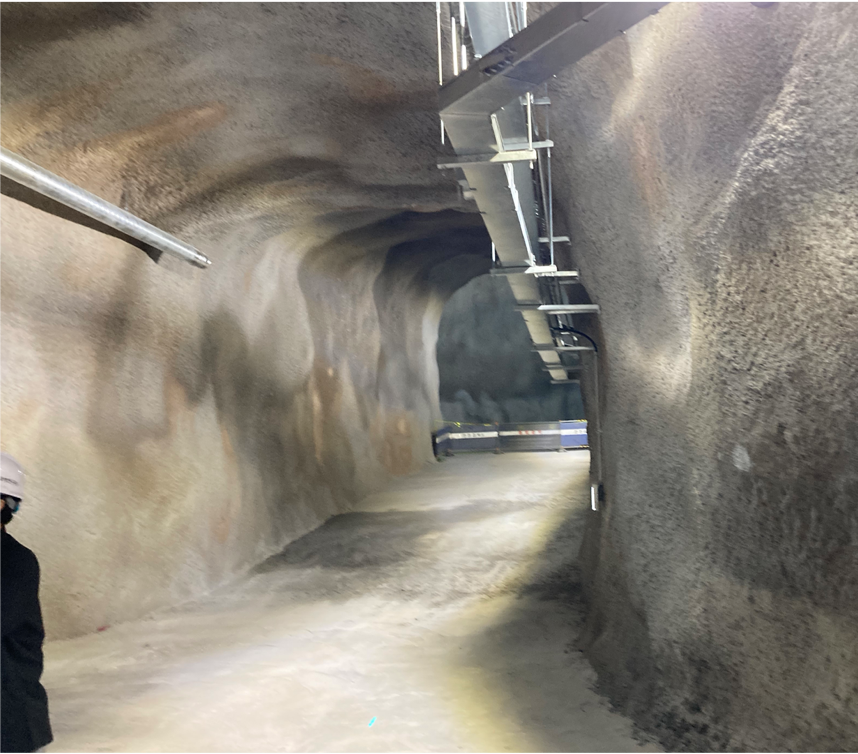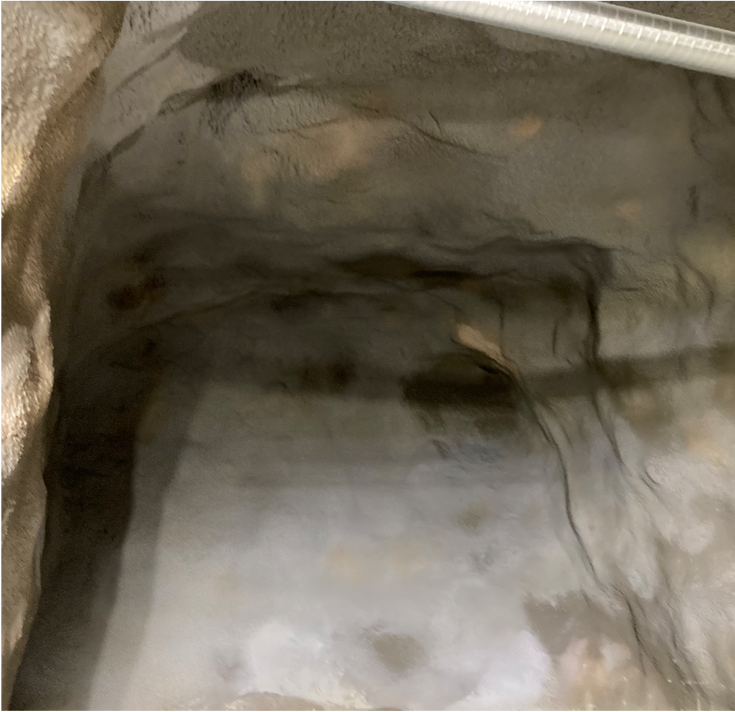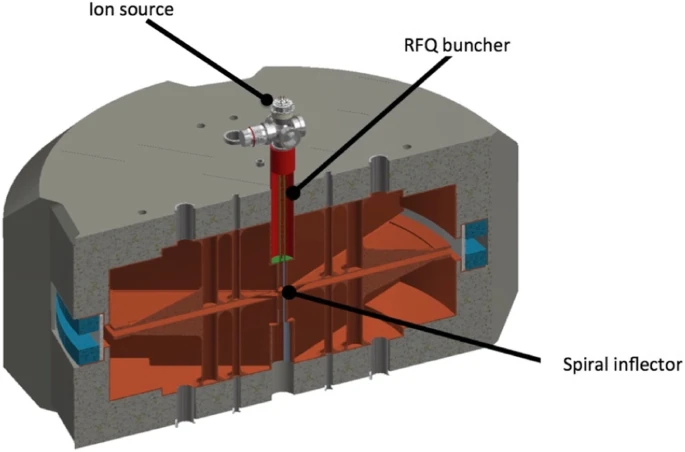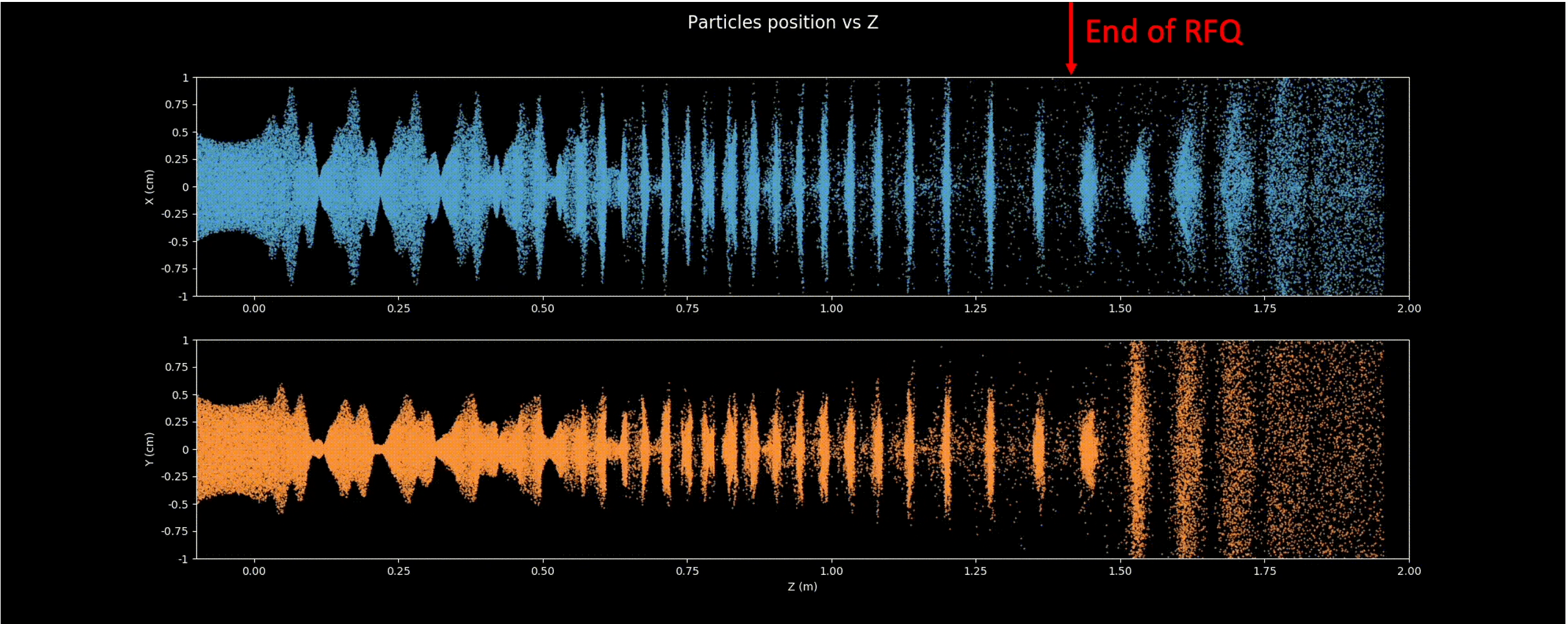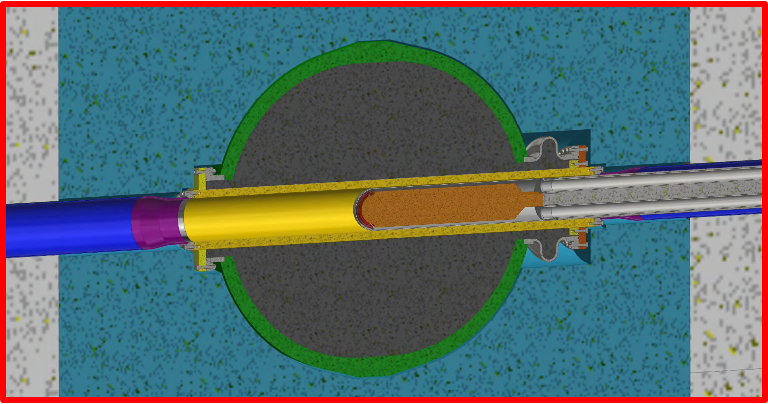Experimental Setup
IsoDAR is an accelerator designed to deliver 60 MeV protons on a Beryllium-Lithium target to produce a flux of electron antineutrinos. The main components of IsoDAR include its ion source, the pre-injection radiofrequency quadrupole, the cyclotron, and the target. When paired with a kiloton-scale liquid scintillator neutrino detector and installed in a significantly background-reducing underground mine, IsoDAR can reach deep into the parameter space of many beyond Standard Model frameworks. Principal components of the experiment are described below.
Ion Source
Mainly to mitigate issues of space charge, IsoDAR accelerates H2+ ions. The source of this hydrogen plasma is IsoDAR's Ion Source, which adopts a multicusp design developed previously at Lawrence Berkeley National Lab. Magnetic mirrors trap charged particles within the ionization region, where a tungsten filament heats a supply of hydrogen gas to high temperatures. The positively charged hydrogen ions are drawn out using an extraction system. Currently under development at MIT's Plasma Science and Fusion Center, our goal is to generate a 10 mA beam of minimally contaminated H2+ with low emittance (a measure of beam quality). So far, a 1 mA production of 80% pure H2+ has been demonstrated in DOI: 10.1063/5.0063301, a record-setting breakthrough in the actualization of the IsoDAR experiment.
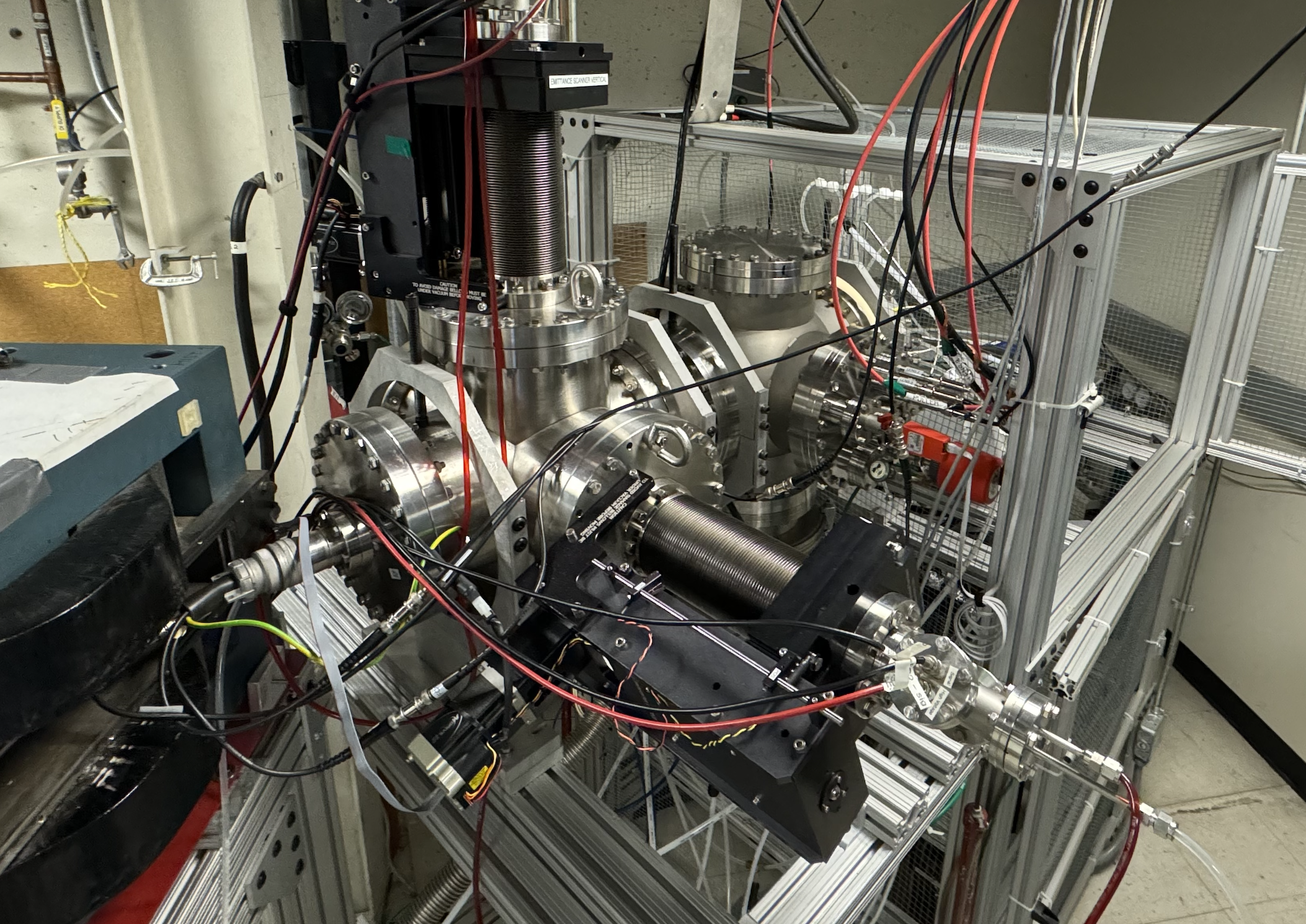
Cyclotron
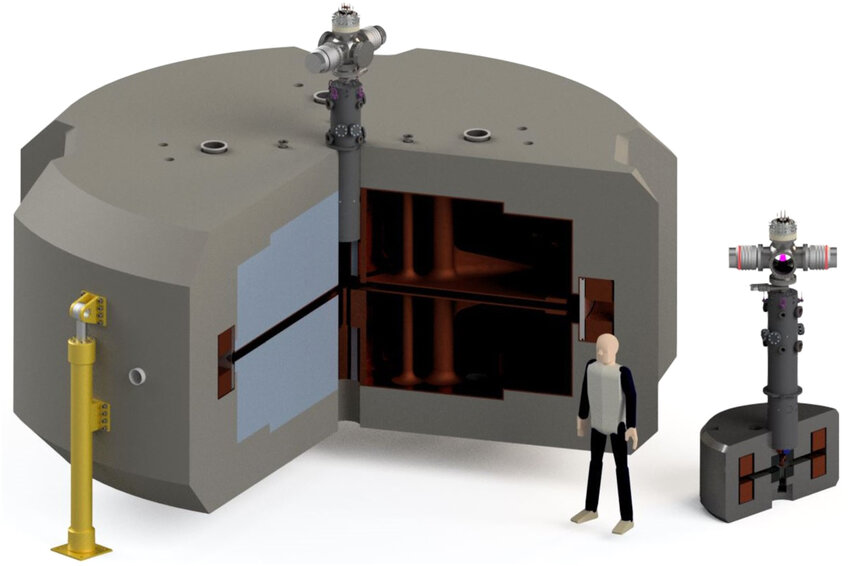
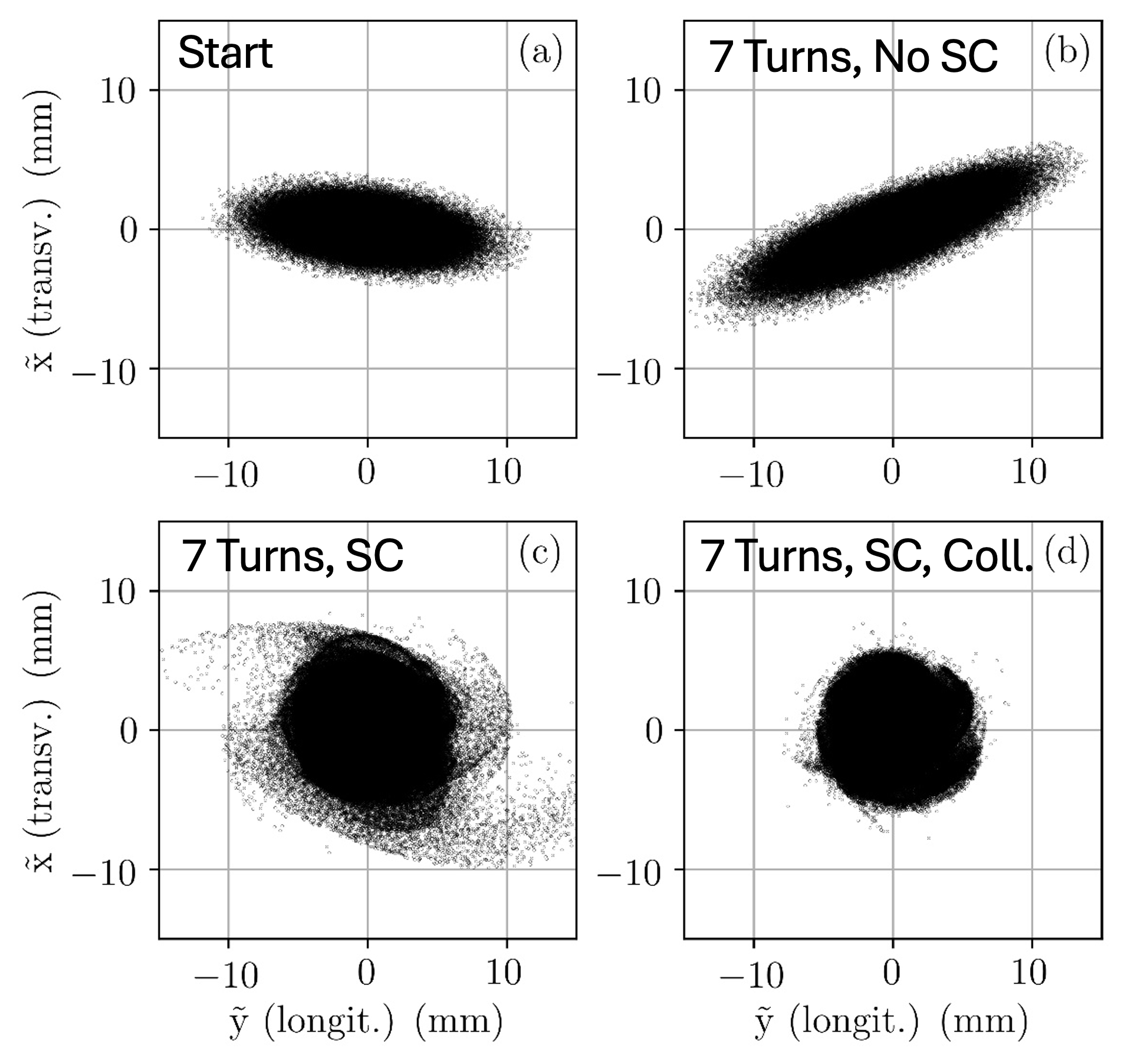
Cyclotrons are powerful particle accelerators used in nuclear physics research and medical applications. Invented by physicist Ernest O. Lawrence in 1931, cyclotrons revolutionized the field of particle physics by providing a means to accelerate charged particles to high energies in a compact space. The basic principle involves using a combination of electric and magnetic fields to propel charged particles, such as protons or ions, in a spiral path within a vacuum chamber. As the particles gain energy with each revolution, they are guided outward into a beam that can be directed. Over the years, cyclotrons have evolved in design and efficiency, becoming indispensable tools in both scientific research and medical diagnostics and treatment.
The main accelerator component of the IsoDAR experiment is a cyclotron, capable of delivering a 10 mA beam of 60 MeV protons. IsoDAR's 10 mA beam current is ten times stronger than comparable existing cyclotrons. This energy is matched to the properties of IsoDAR's target, enabling nuclear reactions that produce unstable, beta-decaying isotopes. With limited space inside the Yemilab underground research center, a cyclotron was the ideal choice for accelerator. However, since the engineering of such a device is first-of-its-kind, there are significant design considerations that had to be made:
- The beam's high intensity is susceptible to the effects of space charge, where the unavoidable Coulomb repulsion of the positively charged particles in the beam can degrade beam quality. One chosen method to mitigate this is to accelerate hydrogen ions, H2+, which allows the cyclotrons to accelerate two protons for the space-charge price of one.
- An important milestone for the development of cyclotrons was the discovery of vortex motion at the Paul Scherrer Institut (PSI) in Switzerland. In short, the outward Coulomb drift velocity of the ions in the beam, when combined with the magnetic field generated inside the cyclotron, provide a torque which causes the beam to wrap around itself as it traverses the cyclotron. This actually has the effect of compacting the beam, allowing for cleaner extraction. This phenomenon is something we take advantage of in the design of IsoDAR, allowing us to reach never-before-seen beam intensities.
Detector
In any kind of particle physics experiment, the only visible particles are charged ones. Thus, in order to detect a neutrally-charged particle like a neutrino or neutron, we must look at the charged particles they produce through their decays or interactions. In the case of the electron antineutrino, for instance, we look for inverse beta decay (IBD) events, by which an electron antineutrino interacts with a proton in the matter making up our detector, producing a positron (the antimatter partner of an electron, e+) and a neutron. The Feynman diagram for such a process is shown on the right. These events are nice to work with, since they have "coincidence" signatures: an IBD event is characterized by (1) the immediate detection of the positron, and (2) a photon of characteristic energy released from when the outgoing neutron is captured by matter in the detector. These sorts of coincidence signals can be detected with high accuracy. We should note, however, that IsoDAR can detect neutrinos in ways other than IBD; see IsoDAR's capability of making precision electroweak measurements of the Weinberg angle.
The primary detection mechanism of IsoDAR's detector is scintillation. Photons or other energetic charged particles will atoms they pass on their trajectories in an excited state, producing visible light that can be seen by phototubes. While the final design of the detector has not yet been decided, it is possible that the detector will be sensitive to Cherenkov light, as well, which is the pale blue light emitted when charged particles (having energy above some easy-to-predict threshold) travel faster than the speed of light in the material.
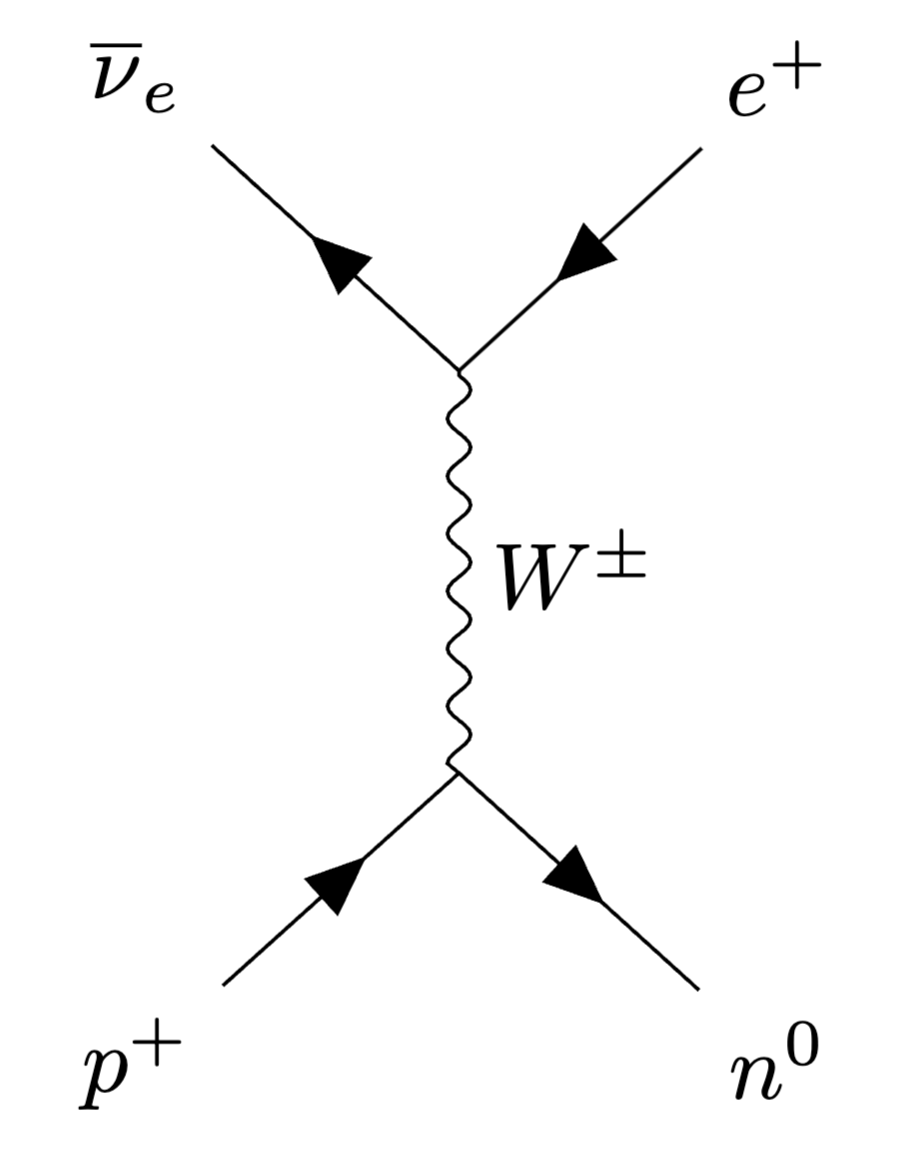
Yemilab Center for Underground Physics
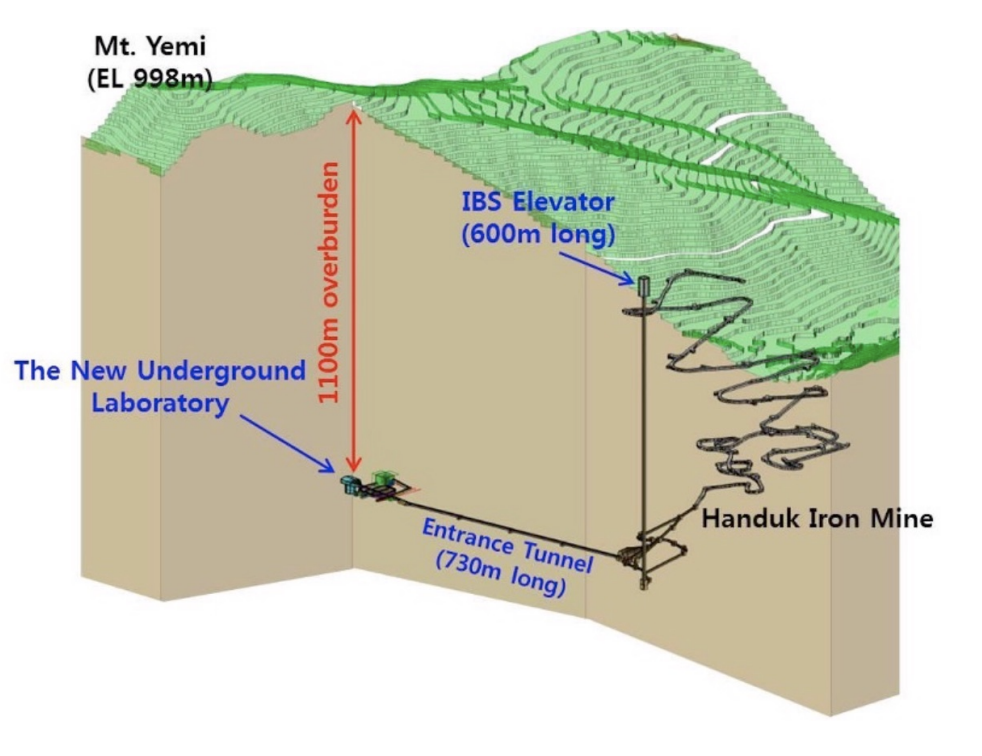
Source: 2110.10635
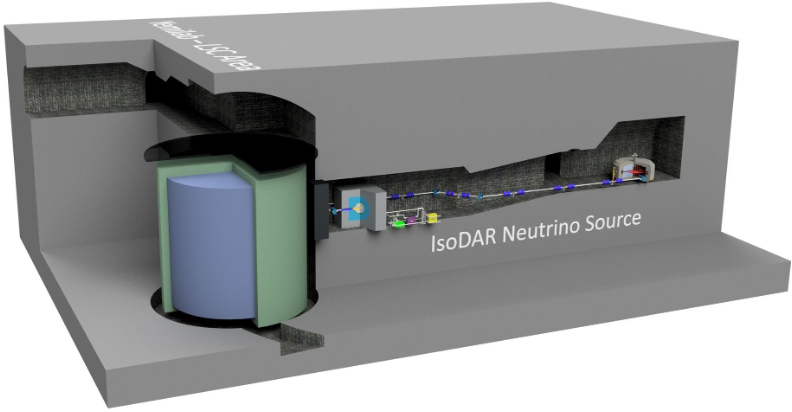
As described above, IsoDAR's detector sees charged particles. The phenomena we're interested in occur with low probability. There are many background sources that would show up in our detector (such as cosmic rays), and overwhelm the signal of the events we want to understand. As such, IsoDAR will be conducted far underground so that the earth above the experiment can be used as overburden to shield against those background signals.
The Yemilab Center for Underground Physics is an underground lab built to give more space to the next generation of beyond standard model (BSM) experiments. It has 1100m of overburden, providing extensive shielding against cosmic rays and other background particles that may appear in the detector. It's placed right near the the Handeok mine, so as to use the mine's existing access shafts and transportation tunnel. IsoDAR construction at Yemilab is underway. Yemilab is also home to experiments like AMoRE Phase-II and COSINE-100U, among others.
